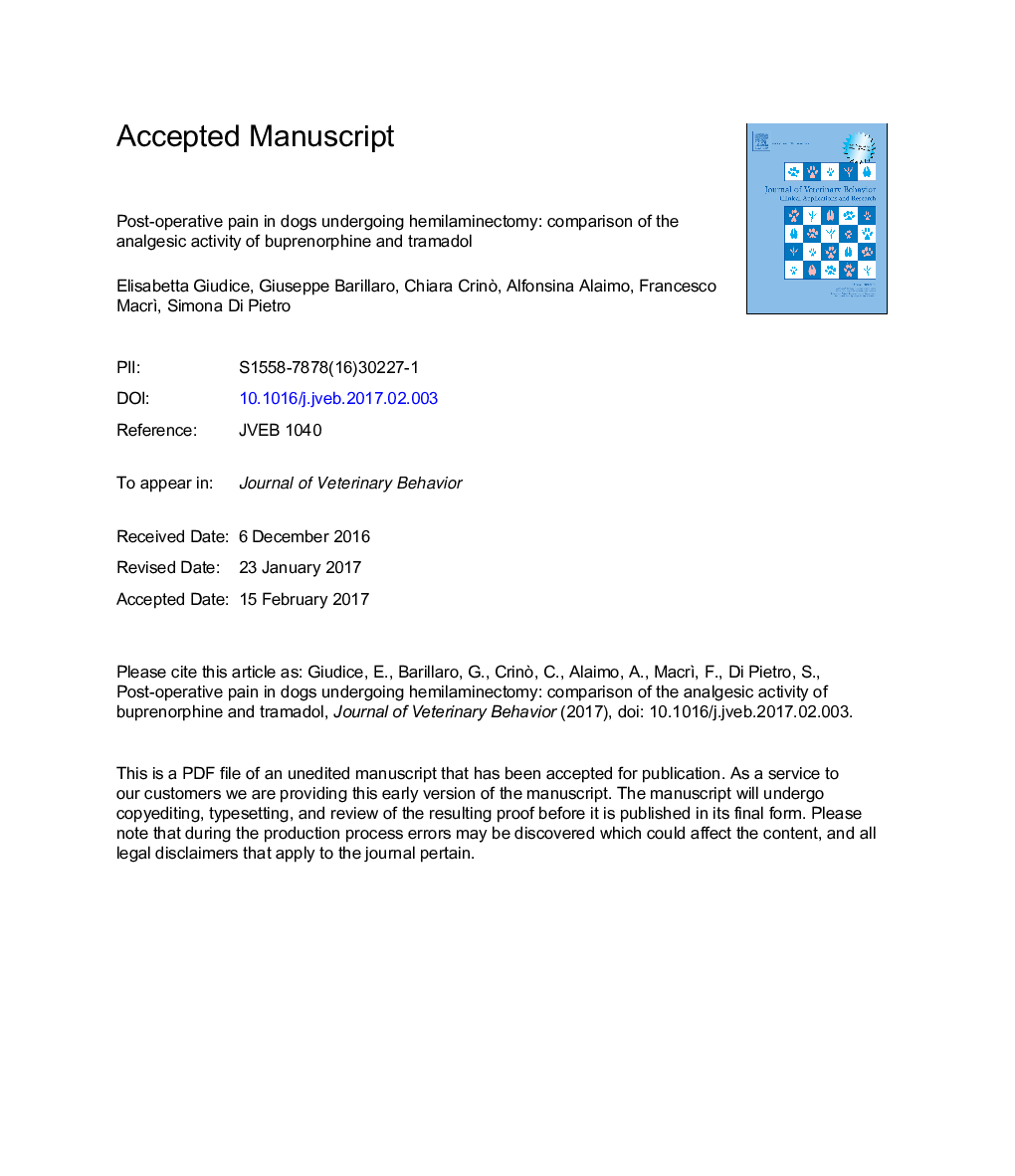| Article ID | Journal | Published Year | Pages | File Type |
|---|---|---|---|---|
| 5535990 | Journal of Veterinary Behavior: Clinical Applications and Research | 2017 | 20 Pages |
Abstract
The objective of this study was to compare the analgesic activity of buprenorphine and tramadol for the management of postoperative pain after hemilaminectomy because of acute intervertebral disc extrusion in dogs. This is a randomized, blinded, and prospective clinical trial. The study was carried out on 50 dogs undergoing hemilaminectomy. After diagnosis, the dogs were divided randomly into 2 groups: group A (n = 25 dogs) received 3 mg/kgâ1 of tramadol intramuscularly and group B (n = 25 dogs) received 0.02 mg/kgâ1 of buprenorphine intramuscularly 10-15 minutes before the end of surgery and, then, every 8 and 6 hours, respectively, for 48 hours. Using the short form of the Glasgow Composite Pain Scale at 4 time points (before and 2, 12, and 24 hours after surgery), the dogs were clinically monitored and scored by the same operator who was blinded to the treatment. Data were analyzed using Mann-Whitney U tests. Significance was set at P < 0.05. Both drugs showed a good analgesic activity. There were significant differences between the 2 groups with regard to the short form of the Glasgow Composite Pain Scale scores: buprenorphine showed a faster and greater analgesic effect. None of the 2 molecules showed any side effects, such as respiratory depression. Buprenorphine and tramadol can be used safely and effectively to control postoperative pain in dogs undergoing hemilaminectomy for acute disc extrusion, thus contributing to animal welfare. Buprenorphine might be better than tramadol during the first stage of hospitalization, but tramadol might represent a good alternative for the pursuance of the treatment, considering its lower incidence of side effects, both contributing to improve animal welfare.
Related Topics
Life Sciences
Agricultural and Biological Sciences
Animal Science and Zoology
Authors
Elisabetta Giudice, Giuseppe Barillaro, Chiara Crinò, Alfonsina Alaimo, Francesco Macrì, Simona Di Pietro,
